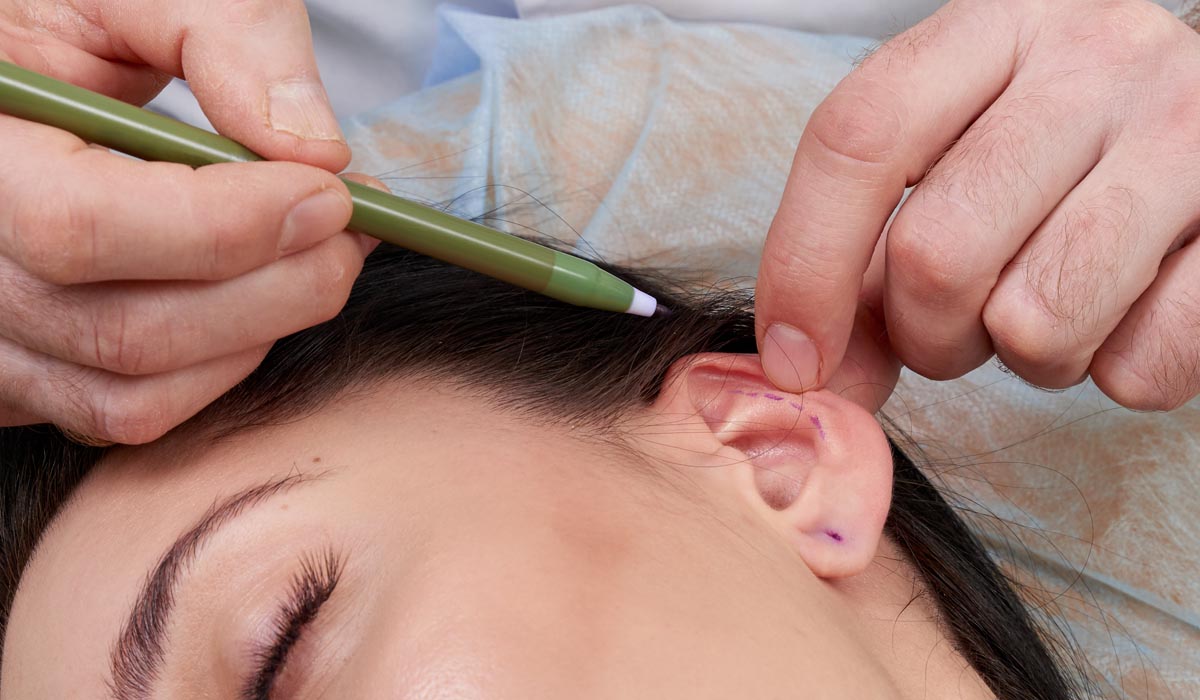✨Book online and enjoy a 5% discount on your first consultation
Home » Plastic Surgery Services » Otoplasty

Otoplasty
The surgical remolding of the pinna, or external ear, is referred to as otoplasty. Cosmetic ear surgery is another common term for this procedure. The goal could be to rectify a flaw or to enhance one’s appearance. An individual whose ears are damaged or was born with a birth defect may choose to have corrective surgery.
This is a surgical procedure used to improve or fix the outer ear. It is conducted on the visible region of the outer ear, known as the auricle. The auricle is made up of skin-covered cartilage folds. It begins to form before birth and continues to develop for many years after birth. If your auricle does not fully develop, you may opt for otoplasty to alter your ears’ size, position, or appearance.
There are some non-surgical techniques as well, which means they do not necessitate an incision. These may have a shorter healing time and lower associated complications.
Possible Causes
Otoplasty is done chiefly for cosmetic reasons.
Risk Factors
Just like any surgery, otoplasty also comes with some risks. Some of the common risks associated with otoplasty are:
Signs and Symptoms
Signs that you need otoplasty depend on the type of ear problem you are facing. Below are major types of otoplasty conducted:
Diagnosis
During your early visits, the surgeon is likely to conduct the following examinations:
Treatment Options at 7DMC
Our plastic surgery clinic is one of the best otoplasty treatment centers in Dubai. Our board-certified plastic surgeons prioritize patient care and safety in an empathetic setting with cutting-edge technology.
You must consult with our plastic surgeon, Dr. Georgia Vadarli, before undergoing the procedure. She is a Greek Board-Certified Plastic Surgeon who specializes in cosmetic surgery and has a long list of affiliations and achievements to her credit.
Our specialist will ask for information about any medicines you are currently taking, previous treatments, and any present or previous health conditions during the consultation. Our plastic surgeon will examine your ears to determine their structure, size, and position. They might also take measurements or photographs. Our specialist will also discuss with you the entire procedure, associated risks, and expected outcome.
During the treatment, adults and older children may be given local anesthesia along with a sedative. General anesthesia could be used in some cases. Otoplasty techniques differ depending on the type of correction required. As a result of our plastic surgeon’s procedure, the incision sites and scars will be determined. Our surgeon may make slits on the rear ends of your ears or in the internal grooves of your ears. Extra tissue and skin will be removed after making cuts. They’ll next fold the cartilage into the correct place and sew it up. Slits will be closed with additional stitches.
After the surgery, your ears will be covered with a dressing. Be sure to clean and dry your dressing. In addition, refrain from scratching or picking at your ears, lie in a posture where your ears are not resting on your pillow, and wear clothing that doesn’t require pulling over your head. Some stitches dissolve on their own. However, it’s possible that you may need to have your sutures removed in some situations. Our specialist will inform you if this is required. Nonetheless, before resuming normal activities, you must consult our doctor.
Otoplasty is typically a safe and straightforward procedure. It can be performed at any age, provided the ears are fully mature. Mostly, by the age of five, ears reach complete maturity. Thus, a large percentage of ear pinning procedures are performed between the ages of five and seven.
The most critical healing time after an ear surgery is the first week, but it is advised that you take a week off work. Some patients may require some additional recovery time. Full recovery may take 2-3 weeks. However, during this time, you can function normally and resume work.
Yes, the results of otoplasty are permanent. Revisions are extremely rare; if done, they are minor.
Near Dubai Miracle Garden,
Diamond Business centre A,
1st Floor,
Arjan, AI Barsha,
Dubai.
WhatsApp us